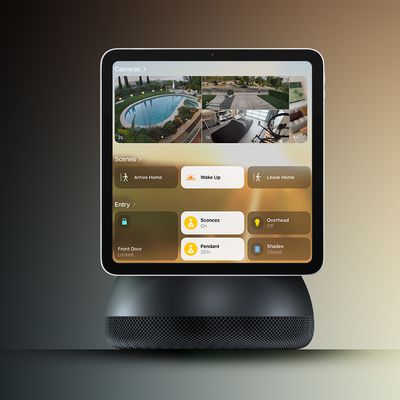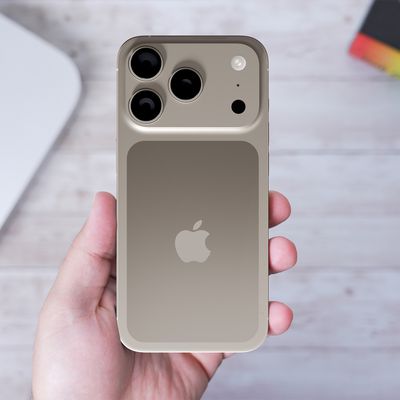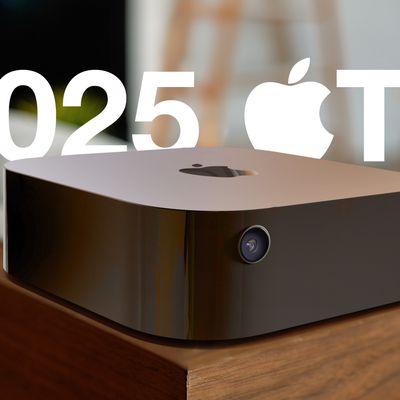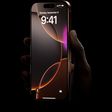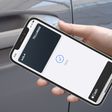Apple May Adopt 1704 x 960 Resolution Display for Upcoming iPhone 6
Apple's next generation iPhone 6 may adopt a higher resolution display, jumping from the current iPhone 5s resolution of 1136 x 640 to a sharper 1704 x 960 resolution, reports 9to5Mac. On the rumored 4.7-inch model, this would result in a display with 416 ppi and the same 16:9 ratio of the iPhone 5/5s/5c, while a 5.5-inch model at the same resolution would carry a density of 356 ppi.
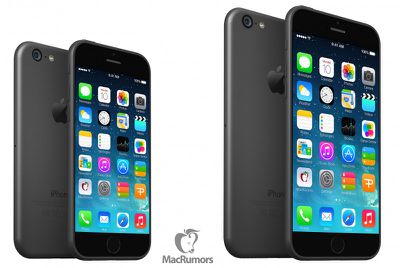
With Apple's rumored move to larger displays in the iPhone 6, much discussion has been centered around what resolution Apple will use and how any changes would affect developers. Some speculation had suggested Apple might simply maintain the same resolution as on the iPhone 5s, making a seamless transition for developers. This stretch process would, however, drop the pixel density of the display below Apple's criteria for a "Retina" display.
Alternatively, Apple could boost the resolution to maintain or increase the pixel density, although this move would require work from app developers to maintain compatibility with the new devices. KGI Securities analyst Ming-Chi Kuo suggested last month that Apple would maintain the current 326 ppi density, which could be achieved by bumping a 4.7-inch display to 1334 x 750, and we previously explored how that might work.
But according to 9to5Mac, Apple may adopt an even higher-resolution display that triples the base number of pixels of the iPhone screen in both length and width. This "3x" mode would take the base "1x" resolution of 568 x 320 and expand it to 1704 x 960. Using this method, Apple would retain the Retina branding at 416 ppi and keep the current 16:9 ratio of the iPhone 5/5s/5c.
This means that Apple will likely be tripling the aforementioned “base resolution” (568 x 320) of the iPhone screen in both directions, and that the iPhone screen resolution will be scaled with an increase of 150% from the current 2X resolution of 1136 x 640. Of course, Apple tests several different iPhones and display technologies, so it is possible that Apple chooses to take another route for display specifications for the 2014 iPhone upgrade.
Apple has allegedly been testing this 1704 x 960 resolution and while the design specs for the iPhone 6 are undoubtedly complete, it is not known for sure if Apple has elected to proceed with this resolution. Apple may be preparing to launch the 4.7-inch iPhone 6 sometime this fall with a faster A8 processor and improved camera technology.
Popular Stories
Apple is developing an all-new operating system codenamed "Charismatic," according to Bloomberg's Mark Gurman.
Apple smart home hub concept
This is likely Apple's long-rumored "homeOS" operating system.
In a report this week, Gurman said both Apple's rumored smart home hub in 2026 and tabletop robot in 2027 will run the new operating system. He said the software platform will blend...
Apple made a major slip Wednesday when it accidentally included hardware identifiers in software code linking to numerous unannounced products.
The leaked information provided MacRumors with concrete evidence of Apple's hardware development across multiple product categories. Here's everything that was confirmed through the code discoveries:
New HomePod mini with updated chip – New...
Alleged images of the iPhone 17 Pro Max's internal design have surfaced, offering a potential look inside the device before it is announced by Apple next month.
The images were shared by the account "yeux1122" this week, in a blog post on the Korean platform Naver. The account aggregates Apple rumors and leaks, so it is likely not the original source of the images, and it is unclear if they...
An alleged iPhone 17 Pro production leak may provide a first look at the device's milled all-aluminum chassis, which this year includes the camera bump – in contrast to last year's iPhone 16 Pro model that features a glass camera module attached to an all-glass back panel.
Originally shared by leaker Majin Bu, the image below could be of a moulding, but it still lines up with rumors that...
At least one new Apple Watch model launching next year will feature a "significant redesign," according to Taiwanese supply chain publication DigiTimes.
In a paywalled report this week, citing supply chain insiders, DigiTimes claimed that a high-end 2026 Apple Watch model will feature "exterior design" changes, including but not limited to "eight sensors arranged in a ring pattern visible...
Last week, Apple released and then pulled a software tool that accidentally contained identifiers for many unreleased devices and chips, according to MacRumors contributor Aaron Perris. His findings included new models of the Studio Display, Apple TV, Apple Watches, Apple Vision Pro, iPad mini, HomePod mini, and more.
Here is what was uncovered in the file, according to MacRumors contributor ...
Rumors suggest that Apple is working on an updated version of the Apple TV that's slated for launch later this year. Information about the upcoming device that was found in Apple code indicates that it will be equipped with the A17 Pro chip.
There have been multiple rumors about a new Apple TV coming in 2025 with a new A-series processor, but it hasn't been clear which chip Apple would use...



